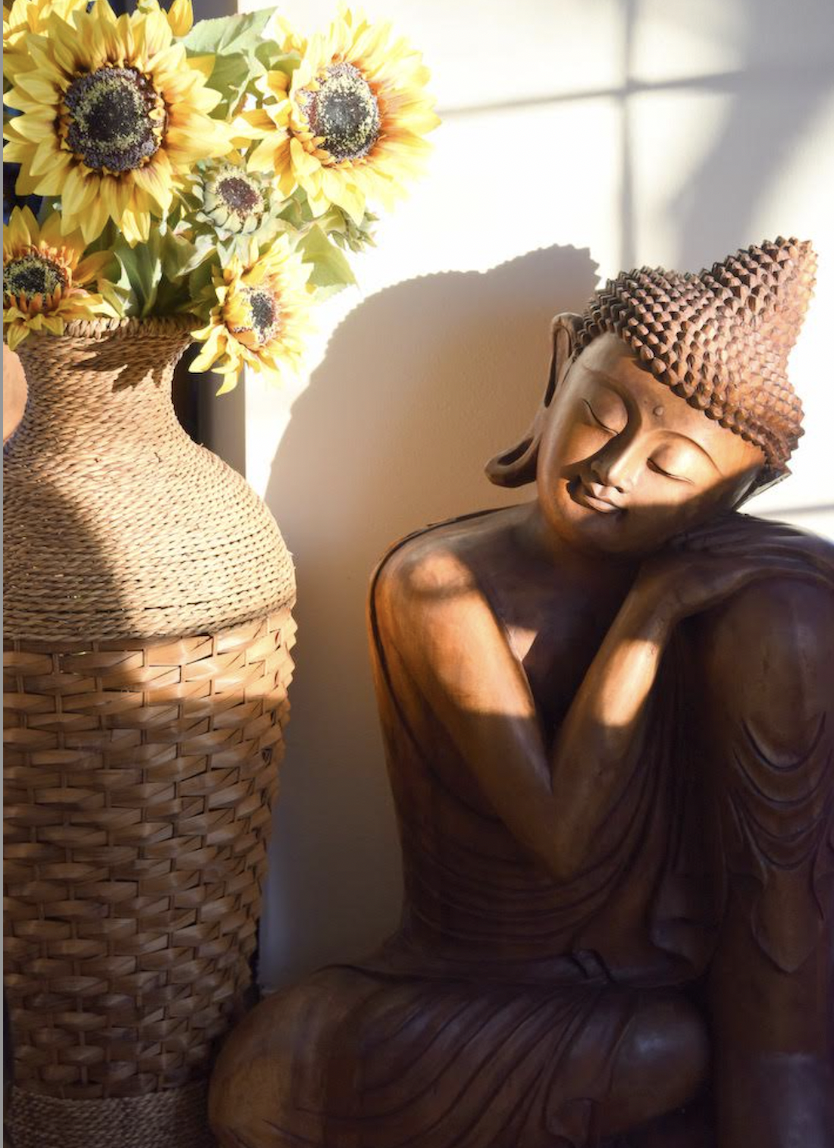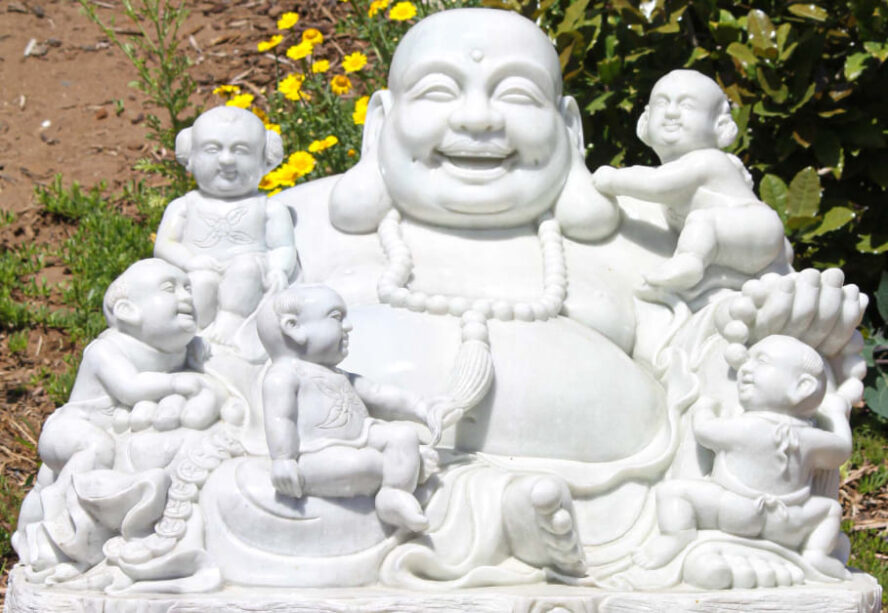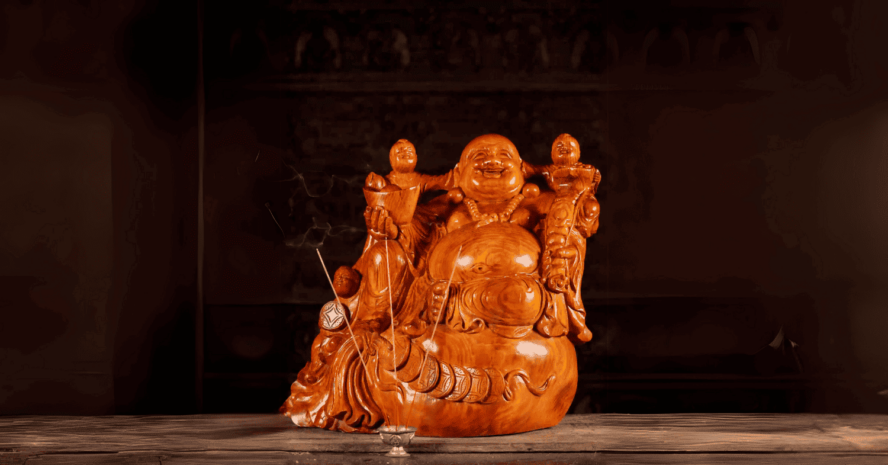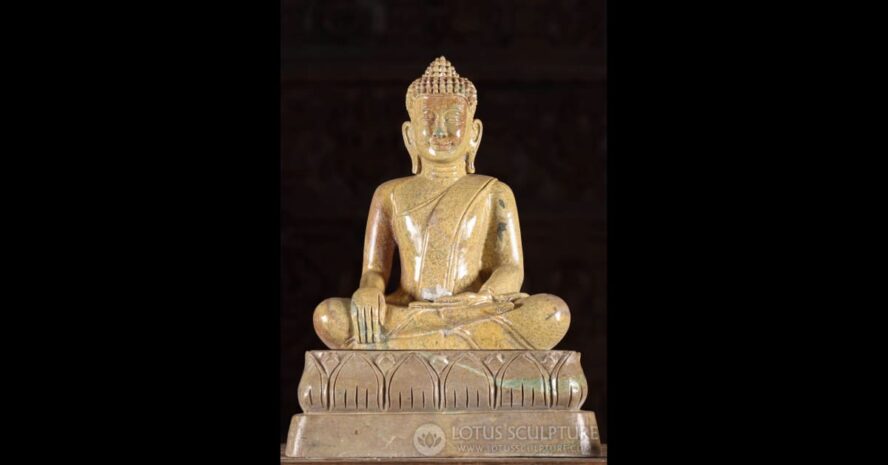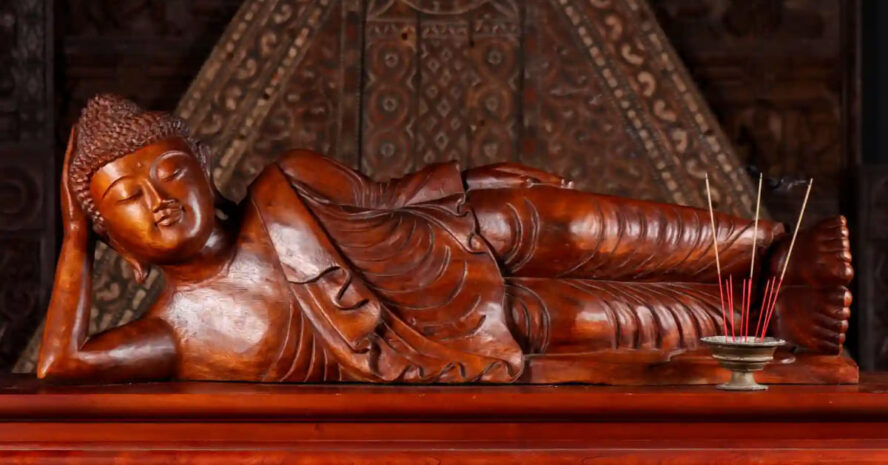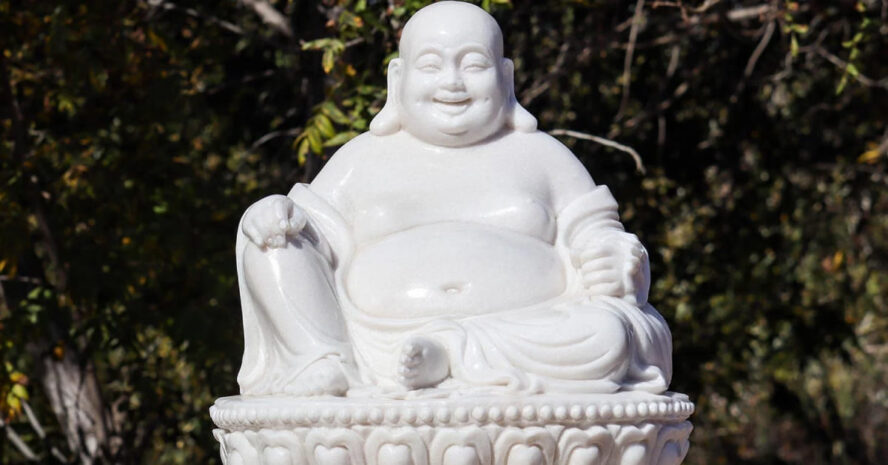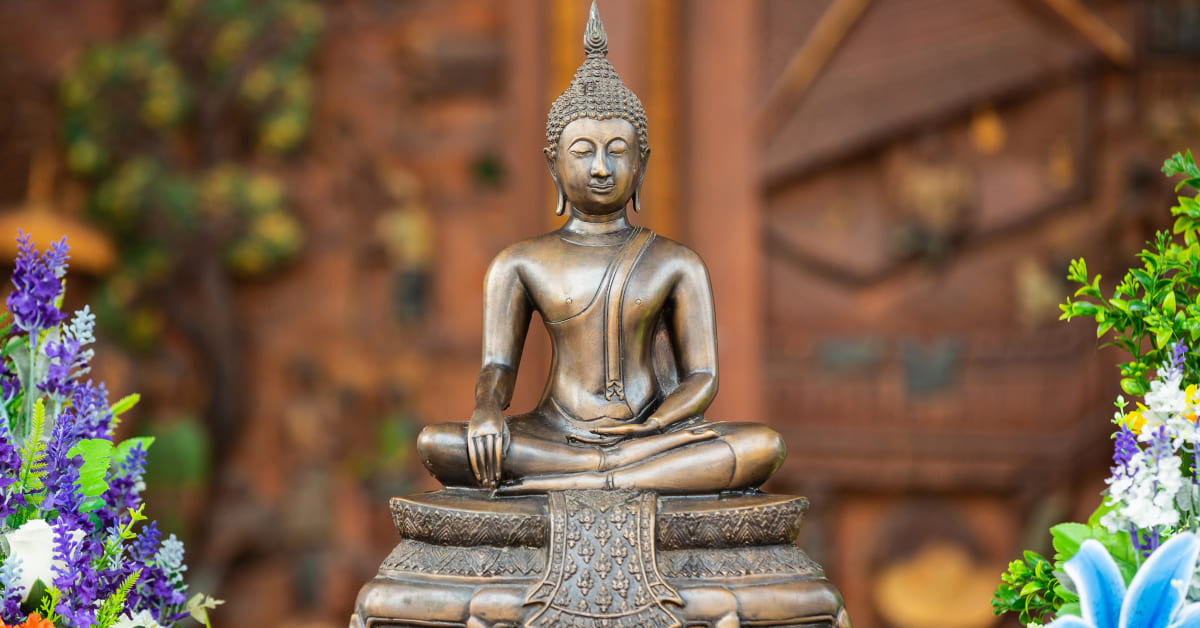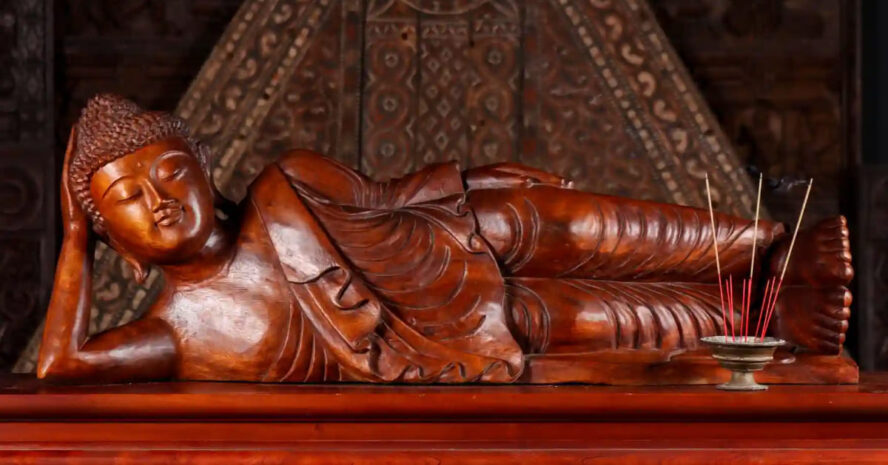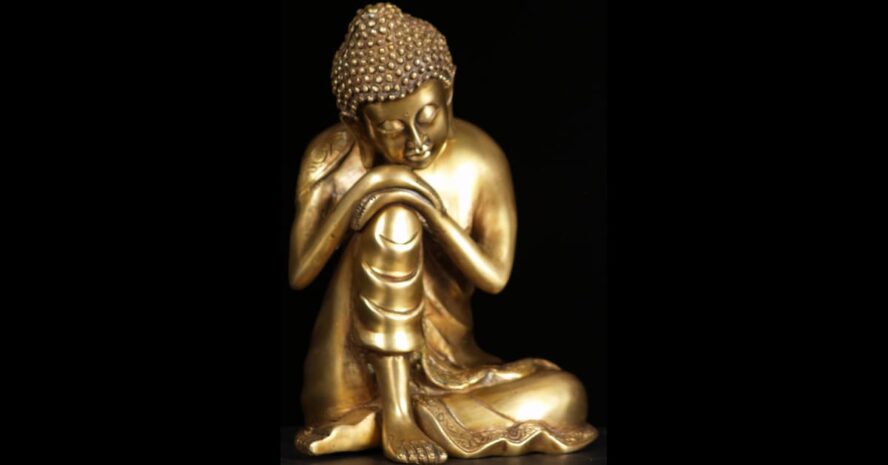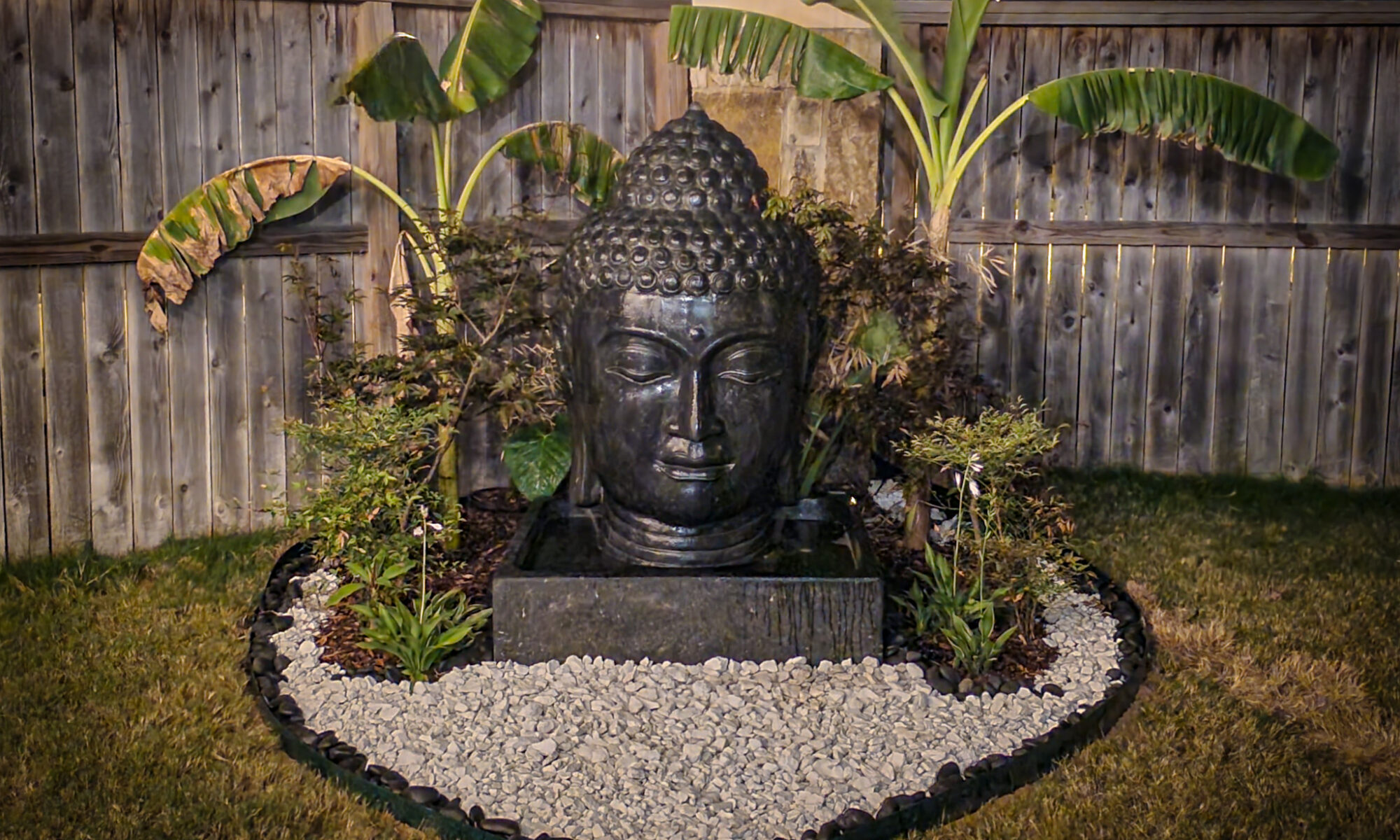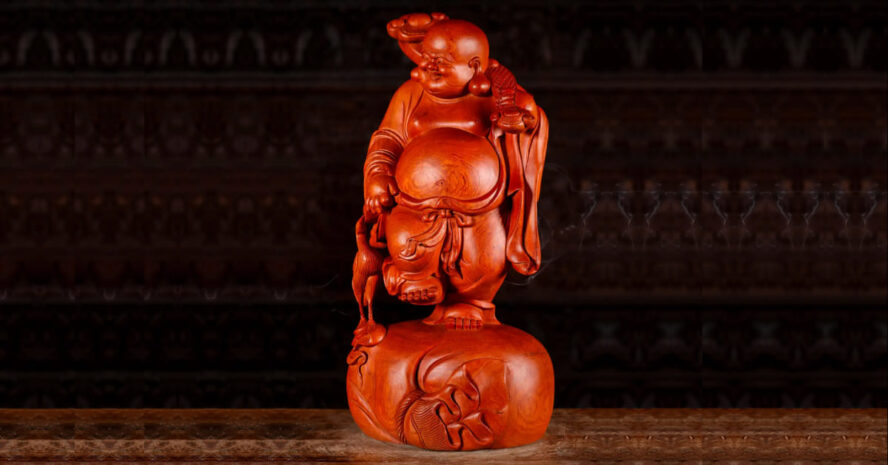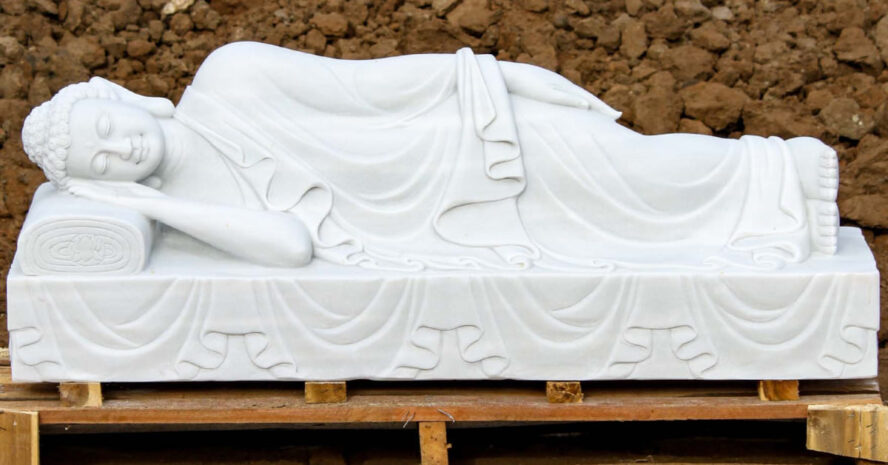Buddha statues are not mere ornamentation; they provide calmness and balance in every room they are placed. There are several benefits of putting Buddha statues some decor in various rooms of the house, whether seeking to make the atmosphere serene, encourage meditation, or just beautify, having Buddhas inside the premises is always appropriate.
So, if you want to spread the Buddhist serenity and, at the same time, decorate the home interior, this article is a detailed discussion on how to place it properly in every room.
Living Room: The Welcoming Presence
The living room is one of the most important parts of the house since it is the area where everybody tends to spend time when at home. Having a Meditating Buddha or a Laughing Buddha at this place makes it inviting and expresses tranquillity.
The sculpture has a calm and serene posture and a meditating position and brings in the feeling of being relaxed and stress-free; the second sculpture, called Laughing Buddha, brings in the feeling of happiness, wealth, and success. It is recommended to place a statue on a bookshelf, on a table, or in a visible corner of the house to attract good luck. It is also important that a small candle or a water fountain be placed near the statue to make the area lively.
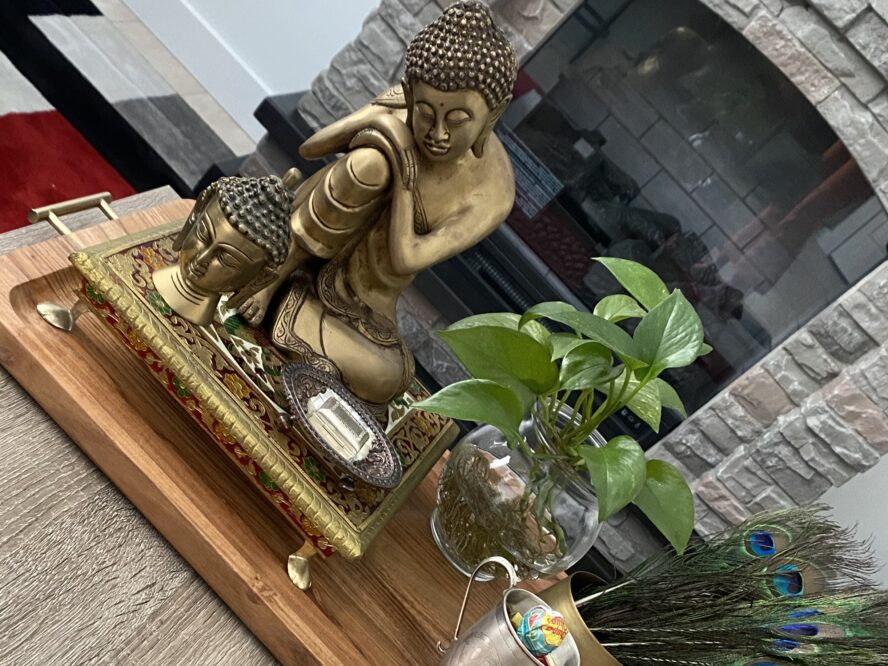
Bedroom: Promoting Peace and Rest
As for the bedroom, it is recommended to choose a Reclining Buddha. This statue symbolizes calmness, sagacity, or calmness and enlightenment. Having a lamp near the bed or placed on a dress table ensures that the environment of the bedroom is conducive for relaxation, hence improving sleep quality and emotional health.
For a welcoming and peaceful atmosphere, it is recommended to use materials such as wood or ceramic. In case there is space, one can add a meditating corner with Buddha sculptures to make the aura more calming.
Meditation or Yoga Room: Enhancing Spiritual Practice
A meditation or a yoga room needs to consider a Dhyana Mudra Buddha or a statue of the Buddha in a meditating position. This asana represents meditation and calmness; thus, if you are seeking to champion your religious experience, this pose will serve you well. It is suggested to maybe put it at about eye level, for example, on a small shrine or put a special table with an object in a meditation room. Using scents such as burning incense, dim lights as well as good music also enhances your meditation process.

Entrance or Hallway: Attracting Positivity
The entrance is the first door of every house and mostly defines the general outlook of the house. A Standing Buddha statue should preferably be installed at the main door or in the passageway to let the positive energy and protection begin at the entrance. The gesture depicted here is the Abhaya Mudra (the sign of protection from fear) that signifies strength and safety, so your home will be safe and free from negative energies. An offering dish or a small vase with fresh flowers can be put nearby as well to add to the sacredness added to the statue.
Kitchen or Dining Area: Encouraging Abundance
The kitchen or food preparation area and dining areas are, in fact, the places where the process of feeding and togetherness occurs. A traditional sculpture to place here is of Laughing Buddha with a Sack or Bowl, which brings with it vibrations of plenty, happiness, and wealth. Placing a Laughing Buddha statue near the dining table or kitchen counter fosters an atmosphere of abundance and gratitude, making mealtimes more joyful and harmonious. Every kitchen can be enhanced with a small Buddha figurine beside the bowl of fruits or a water dispenser.
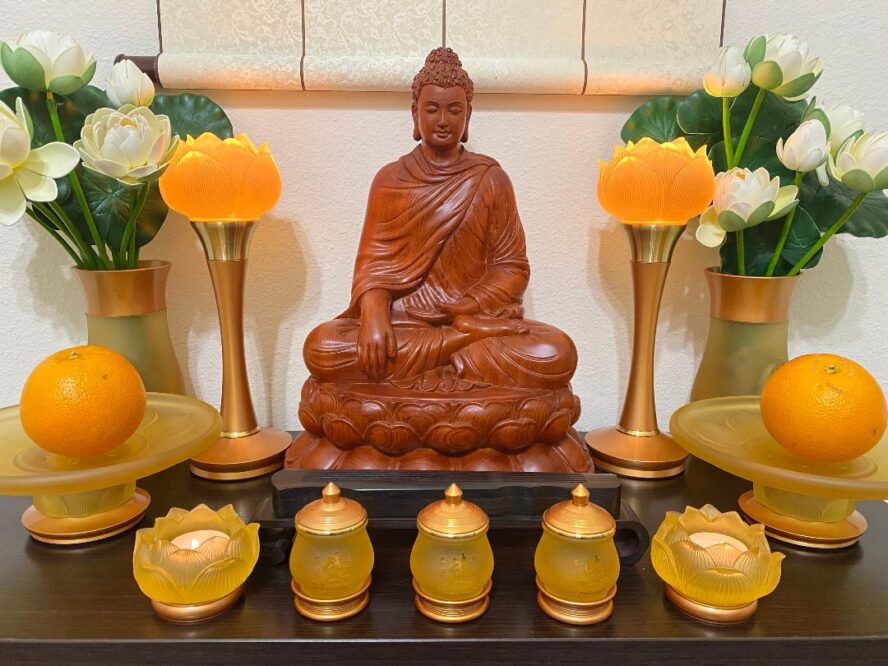
Children’s Room: Encouraging Positivity and Growth
A Baby Buddha or Smiling Buddha can also be installed in a child’s room as it generates positive feelings in the atmosphere. In this case, these statues represent purity, joy, and a shield. It can help the children to feel safe when having a study table or a nightstand containing a small statue.
For them, it is recommended to choose soft colored Buddha statues for harmony with the playfulness and coziness of the child’s room.
The combination of statues in different rooms of the house makes the home decor lively, beautiful and gives a feeling of calmness, knowledge, and health. When one needs a statue for their home, whether to provide a relaxing and calming ambiance, to shield their home from negative energies, to attract financial blessings, or to bring creativity to their creative endeavors, there is a Buddha statue that is suitable for your every home decor need.
Enhance your home’s energy with a Buddha & Bodhisattva statues from the Lotus Sculpture. Invite serenity, positivity, and protection into your space today.

